Leonardo da Vinci Saint John the Baptist
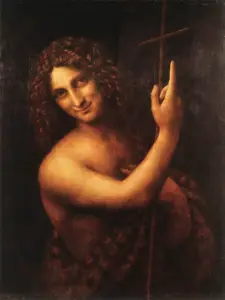
Saint John the Baptist
Title: Saint John the Baptist
Year: c. 1513-1516
Size: 69 x 57 cm
Medium: Oil on wood
Location: Louvre Museum, Paris, France
Saint John the Baptist by Leonardo da Vinci is a High Renaissance masterpiece that continues to captivate art lovers and scholars alike. This painting, believed to be da Vinci’s final work, showcases his skill in capturing the subject’s mystical essence through chiaroscuro.
Currently housed at the Louvre Museum in Paris, this painting is notable for depicting Saint John the Baptist with an enigmatic smile and gesture, symbolizing his important role in the Christian narrative.
Leonardo da Vinci’s Saint John the Baptist was created between 1513 and 1516 when the High Renaissance began transitioning into Mannerism. The painting is crafted on walnut wood with oil, and its original dimensions are 69 x 57 cm.
Soft light and shadow give the figure a three-dimensional appearance, embodying da Vinci’s unparalleled technique and philosophical depth.
The painting’s restoration at the Louvre Museum has allowed the public to view this work in its renewed glory. This exhibition rekindled interest in da Vinci’s ingenious use of light and anatomy, drawing visitors worldwide.
The artwork’s serene and detailed depiction inspires fascination, making it a must-see for anyone interested in Renaissance art.
Historical Context
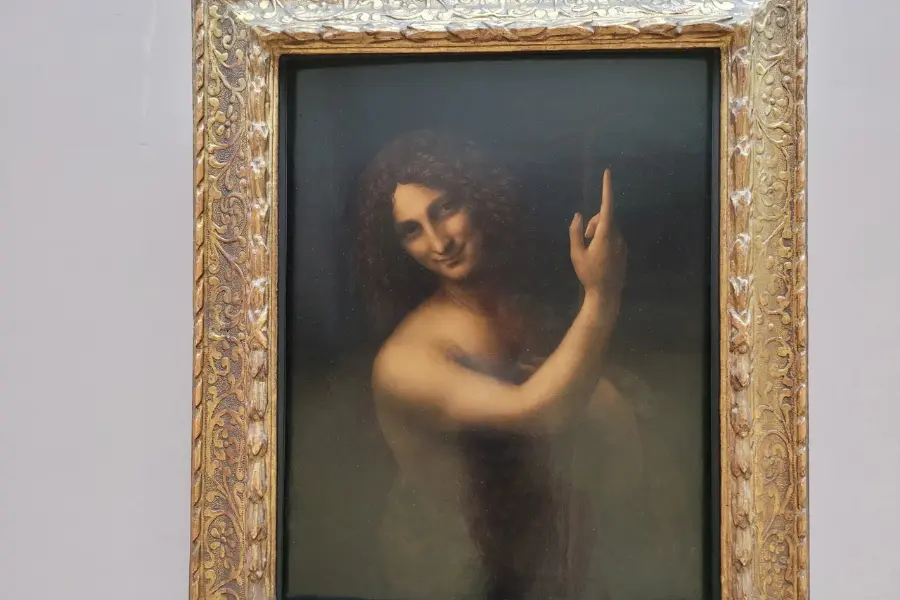
Saint John the Baptist painting by Leonardo da Vinci
Saint John the Baptist da Vinci reflects the artist’s mastery of Renaissance techniques and deep exploration of religious themes. The painting emerged during significant cultural and artistic achievements, highlighting Leonardo’s innovation and unique style.
Leonardo da Vinci’s Early Life
Leonardo da Vinci was born in 1452 in Vinci, Italy. His early fascination with nature and art likely influenced his future works, including the noteworthy Saint John the Baptist Leonardo da Vinci painting.
Leonardo apprenticed to the artist Andrea del Verrocchio in Florence, where he honed his skills in a vibrant creative environment. During this apprenticeship, Leonardo contributed to pieces like The Baptism of Christ, on which Verrocchio and Leonardo collaborated.
Leonardo’s early exposure to diverse artistic techniques set the stage for his future masterpieces, allowing him to develop a unique approach that blended observation with imagination.
Art and Culture in Renaissance Italy
The Italian Renaissance marked a revived interest in classical art and culture, greatly impacting painters like Leonardo da Vinci. Artists during this era found inspiration in humanism, emphasizing the potential of individuals to improve the world through creativity.
Within this context, the Saint John the Baptist painting showcases Leonardo’s use of chiaroscuro and his ability to portray enigmatic figures.
The supportive environment of Renaissance Italy provided Leonardo with opportunities to experiment with technique and form. His work on pieces like the Annunciation Leonard and John the Baptist Leonardo demonstrate the era’s artistic shift towards naturalism and detailed human expression.
Artistic Significance
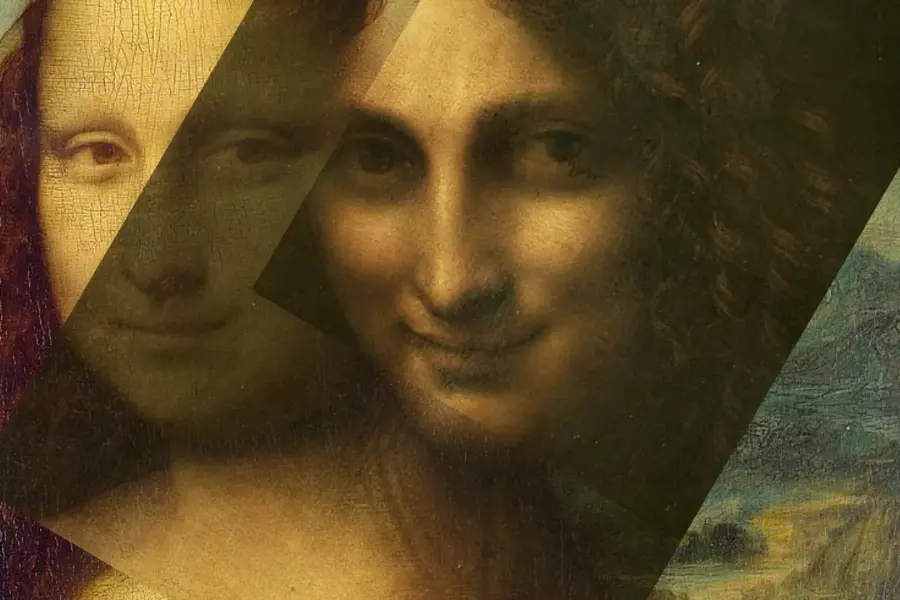
Saint John The Baptist and Mona Lisa are renowned for their enigmatic smiles, innovative perspective, and exceptional realism
Saint John the Baptist by Leonardo da Vinci is a masterpiece renowned for its dramatic use of light and shadow. This painting illustrates innovative techniques that were groundbreaking at the time and captures rich symbolic elements.
Symbolism in ‘Saint John the Baptist’
Leonardo da Vinci’s Saint John the Baptist painting carries deep symbolic meaning. The figure of John the Baptist is depicted pointing upward, a gesture interpreted as a symbol of spiritual awakening and divine revelation.
His enigmatic smile and serene expression add to the mystic aura, reflecting inner knowledge and spirituality themes.
The contrast between light and dark, known as chiaroscuro, highlights the duality of human existence and spiritual enlightenment. This painting invites viewers to contemplate the earthly and divine connection.
Such symbolic representation makes Saint John the Baptist not just a visual experience but a thought-provoking meditation on faith and spiritual insight.
Innovations in Technique and Style
The painting John the Baptist by Leonardo da Vinci is celebrated for innovative techniques.
Da Vinci’s use of chiaroscuro creates a striking three-dimensional effect, setting this work apart from others of his time.
The subtle play of light and shadow gives John’s figure a lifelike presence and a suggestive, almost ethereal aura.
Da Vinci also employed sfumato, a technique that softens transitions between colors and forms, enhancing the painting’s depth and realism.
Critics often laud Leonardo John the Baptist for these groundbreaking techniques, which influenced countless artists and marked a pivotal moment in art history.
These stylistic choices help define Saint John the Baptist as a timeless work that continues to inspire admiration and study.
The Painting’s Journey
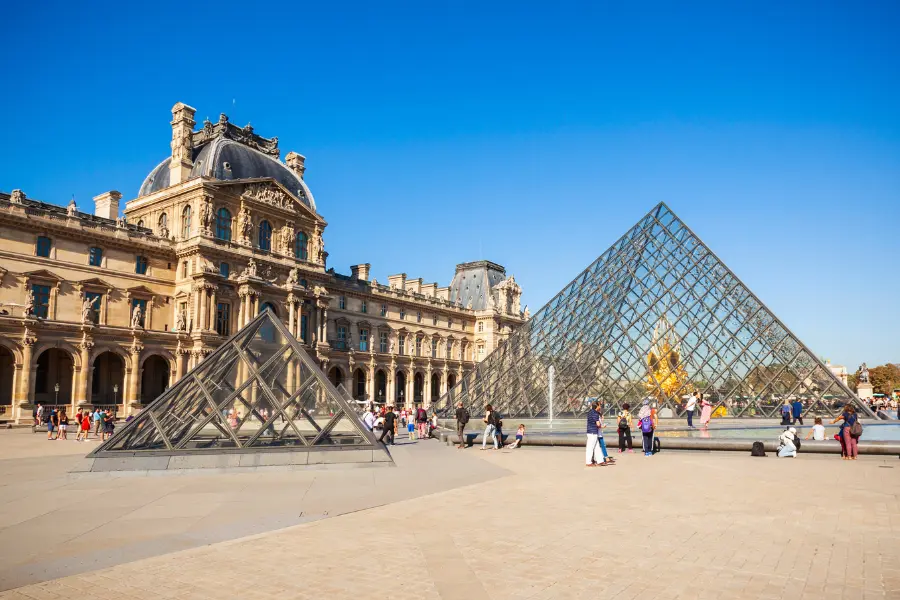
Saint John the Baptist is housed in the Louvre Museum in Paris.
Leonardo da Vinci’s “Saint John the Baptist” journey has been as intriguing as its creation. Each aspect, from possession history to modern preservation, plays a crucial role in maintaining its legacy.
Provenance and Ownership
“Saint John the Baptist,” painted by Leonardo da Vinci, was completed between 1513 and 1516. It is now housed in the Louvre Museum in Paris.
The painting’s first known owner was King Francis I of France, who acquired it shortly after its completion. During Leonardo’s final years, he was a notable patron of the arts and a supporter of the artist.
Throughout its history, the painting has remained in France, surviving the French Revolution and various regime changes. During World War II, it was hidden to protect it from damage or theft.
Its continuous presence in a stable environment has contributed significantly to its preservation, a testament to French commitment to cultural heritage.
Restoration and Preservation Efforts
Preservation of “Saint John the Baptist” involves careful management. Over the years, the painting has undergone various conservation efforts.
These have focused on preserving its walnut wood panel base and vibrant oil paint, maintaining Leonardo’s use of chiaroscuro.
In recent years, experts have used advanced technology, like infrared reflectography, to study the artwork without causing damage.
These efforts help understand the painting’s original state and guide future restoration work.
Conservators must balance maintaining the painting’s integrity with the challenges of age-related deterioration. This delicate balance ensures that future generations can appreciate da Vinci’s masterpiece.
Influence and Legacy
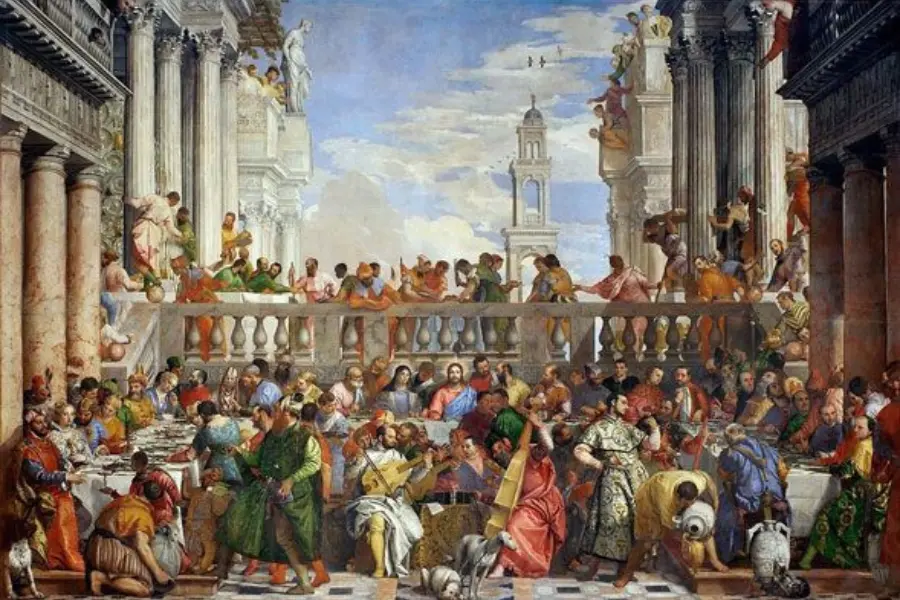
The Wedding Feast at Cana by Paolo Veronese, Leonardo’s unique artistry laid the foundation for the Mannerism movement during the Renaissance
Leonardo da Vinci’s Saint John the Baptist painting has left a significant mark on the art world. It impacted later art movements and shaped how Saint John was depicted.
Da Vinci’s innovative techniques have inspired countless artists. Two key areas of influence are its role in art movements and its legacy in depicting Saint John.
Impact on Later Art Movements
The Saint John the Baptist painting introduced innovative techniques like chiaroscuro and sfumato, which added depth and realism.
These methods greatly influenced the development of Baroque art, where artists like Caravaggio explored dramatic lighting and soft transitions between colors.
Saint John’s expressive pose and enigmatic expression challenged traditional portrayal techniques, laying the groundwork for styles emphasizing emotion and personality.
Leonardo’s unique artistic approaches became foundational for the Mannerism movement during the Renaissance. This movement adopted the elongated forms and sophisticated compositions seen in works by artists inspired by Leonardo.
Art movements across Europe absorbed aspects of Leonardo’s methods, ensuring his techniques left a lasting legacy on the development of Western art.
Depictions of Saint John the Baptist in Art
In Saint John the Baptist, Leonardo presents the subject with a mysterious smile and pointing gesture, which became iconic in many later artworks.
The portrayal emphasizes spiritual themes and inner contemplation, focusing on John’s spiritual and prophetic nature. It captures an intimate moment with a deep connection to divine inspiration.
Leonardo’s portrayal of John has inspired artists like Raphael and El Greco. The painting’s stylistic elements echo the depictions of John in various artworks throughout the centuries.
This painting remains an enduring influence, celebrated in collections worldwide for its artistic innovation and profound spiritual impact.
Current Exhibition and Accessibility
Saint John the Baptist by Leonardo da Vinci is a highly regarded masterpiece. Visitors can explore the artwork’s rich history and significance through various exhibitions and virtual platforms.
Display Locations and Public Viewing
The Saint John the Baptist painting is part of the collection at the Musée du Louvre in Paris. It remains a central piece in the museum, drawing crowds interested in Renaissance art.
In addition, the painting occasionally goes on loan to other prestigious institutions, such as the Louvre Abu Dhabi, allowing a broader audience to experience da Vinci’s work firsthand.
When displayed, the painting is usually accompanied by detailed information panels that delve into its creation’s context and significance.
The Louvre Abu Dhabi welcomes the painting, enhancing the city’s reputation for cultural curiosity.
These exhibitions enable art lovers to engage with the painting deeply and closely study Leonardo’s technique and style.
Virtual Exhibitions and Catalogs
For those unable to view the painting in person, virtual exhibitions provide an accessible way to enjoy Leonardo da Vinci’s works.
Online platforms often host detailed images, allowing viewers to appreciate the painting’s intricate details.
These virtual exhibits include interactive elements, such as zooming in on specific areas, learning about the painting’s history, and comparing it with other works, such as Leonardo’s Annunciation.
Furthermore, digital catalogs often accompany these virtual exhibitions, offering insightful essays and analyses.
Art enthusiasts can access these resources, enhancing their understanding of the Saint John the Baptist painting through historical contexts and expert commentaries.
These digital platforms broaden accessibility, ensuring that da Vinci’s artistry reaches a global audience.
Final Thoughts
Saint John the Baptist da Vinci is a captivating artwork from the High Renaissance. Leonardo da Vinci’s portrayal of the saint combines mystery and symbolism, capturing the viewer’s imagination.
The painting stands out with its use of chiaroscuro, creating a dramatic contrast between light and shadow.
Leonardo’s depiction of Saint John is intriguing. Contrary to traditional images of the saint as rugged and masculine, Leonardo presents him with a softer and more effeminate look.
This choice prompts viewers to reflect on the identity and interpretation of biblical figures.
The painting features Saint John with a gentle smile and his finger pointing upwards, a gesture interpreted in various ways. Some see this as a sign pointing to the heavens, others as a symbol of the divine message he represents.
Despite its simplicity, this gesture has layers of meaning.
In terms of technique, the painting exemplifies Leonardo’s mastery. The smooth brushwork and delicate attention to detail showcase his skill.
Chiaroscuro highlights Saint John and adds depth to the background, inviting observers to consider what lies beyond the canvas.
Saint John’s expression and pose evoke a sense of calm and contemplation, contrasting with more assertive depictions often seen in religious art of the time. This sets Leonardo’s work apart, encouraging viewers to engage with its subtle nuances.
Frequently Asked Questions
Leonardo da Vinci’s painting of Saint John the Baptist is an intriguing work with significant historical and artistic value. This section addresses common questions about the artwork’s purpose, location, symbolism, and more.
Why did Leonardo da Vinci paint St. John the Baptist?
Leonardo da Vinci painted Saint John the Baptist during his later years, likely between 1513 and 1516.
The painting reflects his mastery of techniques like chiaroscuro and sfumato. It showcases the religious figure with a serene and mysterious expression. The painting also embodies the transition and depth of religious themes characteristic of the High Renaissance.
Where is Da Vinci’s John the Baptist?
Saint John the Baptist by Leonardo da Vinci is located at the Louvre Abu Dhabi in Abu Dhabi. This painting, done in oil on walnut wood, is a remarkable example of High Renaissance art, recognized and housed in a world-renowned collection.
What is the meaning of the Saint John the Baptist painting?
The painting of Saint John the Baptist conveys various themes, including purity, faith, and prophecy. Leonardo’s use of light and shadow creates a spiritual and introspective atmosphere. The figure’s gesture, pointing upwards, may symbolize divine inspiration or guidance.
What does St. John the Baptist symbolize?
Saint John the Baptist is often seen as a symbol of repentance and preparation.
In the context of this painting, he represents the forerunner to Jesus, heralding the new spiritual age. His serene expression and upward gesture reinforce themes of spiritual insight and salvation.
What painting is Leonardo da Vinci most remembered for?
While Leonardo da Vinci created numerous masterpieces, he is most remembered for the Mona Lisa. This iconic portrait is celebrated for its mysterious smile, innovative use of perspective, and remarkable sense of realism.
How much is the Mona Lisa worth?
The Mona Lisa, held in the Louvre Museum in Paris, is considered priceless. While estimates of its value vary, it is widely regarded as one of the most valuable paintings globally, akin to an irreplaceable cultural treasure.
What painting is Da Vinci most famous for and why?
Leonardo da Vinci is most famous for the Mona Lisa due to its artistic brilliance and enduring appeal. The portrait’s enigmatic expression and da Vinci’s groundbreaking techniques have captivated audiences for centuries.
What church did Leonardo da Vinci paint?
Leonardo da Vinci created works for various religious settings but did not explicitly paint a church. Instead, his work included religious subjects like The Last Supper, painted in Milan’s Santa Maria delle Grazie convent.
Why is the Mona Lisa so famous?
The Mona Lisa’s fame stems from its artistic mastery, enigmatic expression, and historical significance. Its perfection in balance, perspective, and emotional depth has made it a symbol of creative genius.
Why are there so few Da Vinci paintings?
Few paintings by Leonardo da Vinci exist because he often left works unfinished and was selective in his projects.
His focus on scientific exploration and invention may also have contributed to his fewer completed paintings than other artists of his time.
Was John the Baptist Jesus cousin?
In the Gospel of Luke, John is a relative of Jesus, whose birth was predicted by Gabriel. In the Gospel of John, John the Baptist saw the Holy Spirit descend like a dove and explicitly proclaimed that Jesus was the Son of God.
Why is John the Baptist important?
Sfumato Technique: The painting exemplifies da Vinci’s mastery of sfumato, a technique that uses subtle gradations of light and shadow to model form and create an illusion of depth. This technique gives the painting a hazy, dreamlike quality and makes the figure of John the Baptist appear to emerge from the shadows.
Enigmatic Smile: The painting is famous for John the Baptist’s mysterious smile, reminiscent of the Mona Lisa. The smile has been interpreted in various ways, from suggesting spiritual enlightenment to hinting at a more sensual or ambiguous nature.


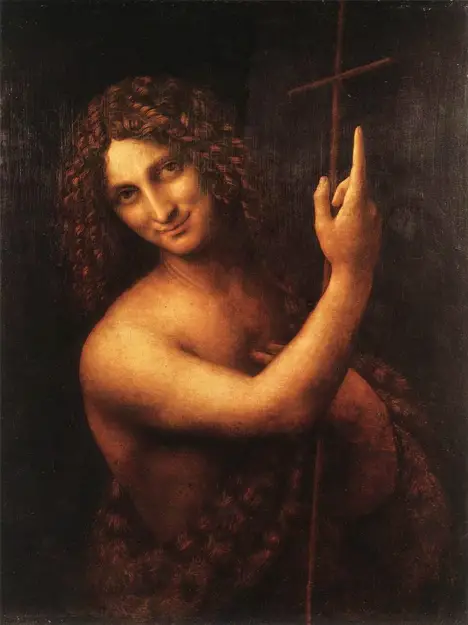





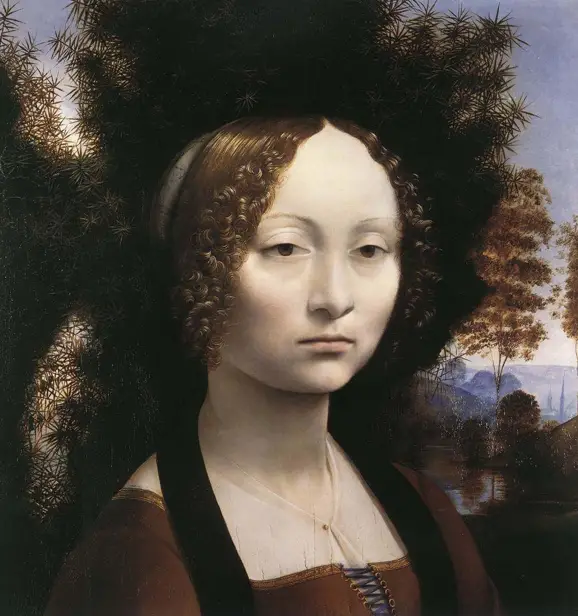
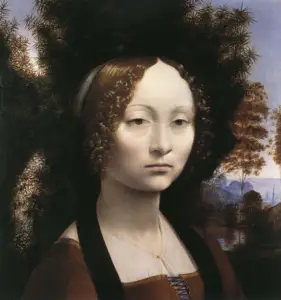
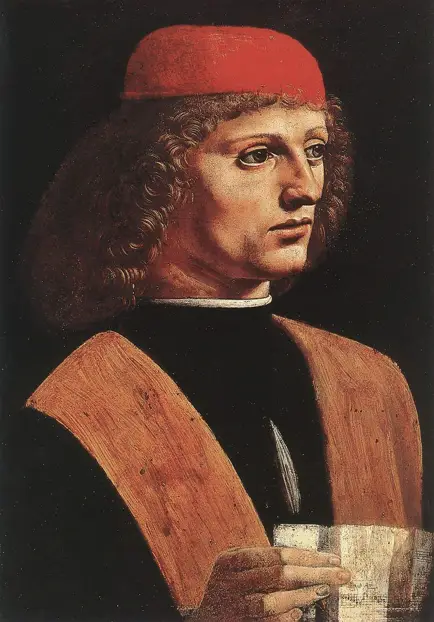
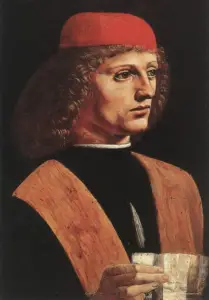
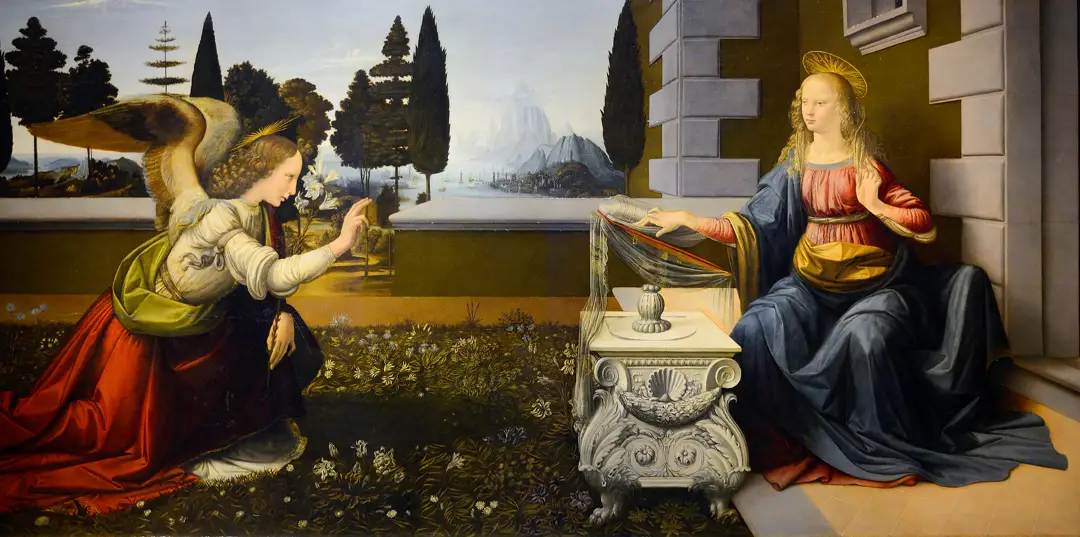

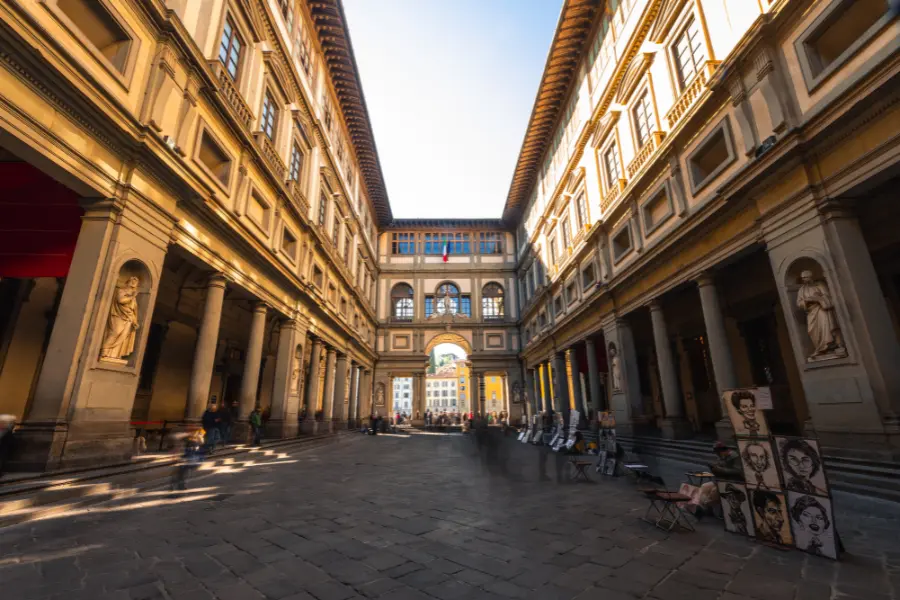

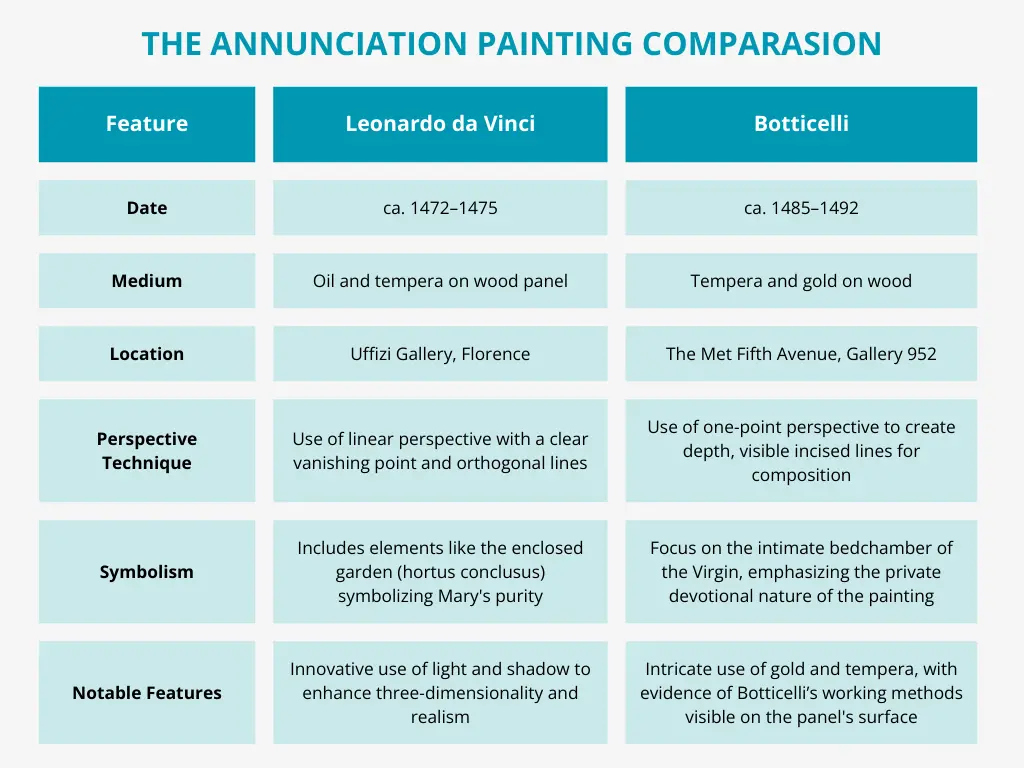
 Leonardo Bianchi,
the creator of Leonardo da Vinci's Inventions.
Thank you for visiting
Leonardo Bianchi,
the creator of Leonardo da Vinci's Inventions.
Thank you for visiting